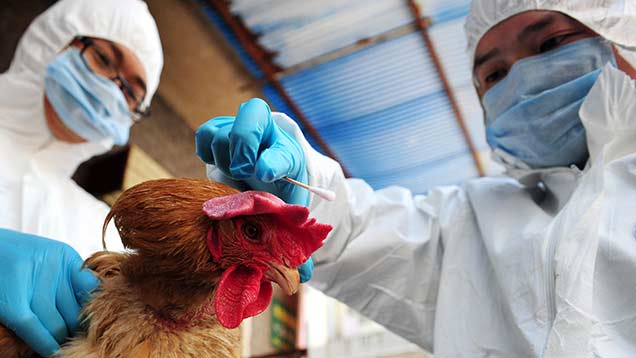£247m: The cost of bird flu to the US poultry export market
 © Imaginechina/Rex Shutterstock
© Imaginechina/Rex Shutterstock The devastation to American poultry business – and its rural economy as a whole – caused by mass outbreaks of avian influenza is becoming ever more apparent.
In Iowa, the state most heavily hit by the virus, a study has suggested 8,500 jobs have been axed because of the loss of production, with a cost to the economy of some US$1.2bn (£766m).
See also: More bird flu news
A report commissioned by Iowa’s Farm Bureau Federation also highlighted the damage to businesses involved in the supply chain, such as hauliers, veterinarians and grain farmers.
It suggests workers will leave the area in search of employment, making vacancies difficult to fill once the state, which lost 40% of its laying hens, recovers.
Export losses
The wider poultry industry is still hurting from closed export markets.
While it is more than seven weeks since the last outbreak of bird flu, many countries will not accept US chicken.
The Foreign Agricultural Service, which monitors America’s food trade balance, suggests a 14% drop in poultry exports in the first half of 2015 – one of the largest ever recorded. It equates to a US$386m (£247m) slice taken from a market worth $2.44bn (£1.56bn) in the previous period.
Despite this, some countries are beginning to lift import restrictions from specific states, such as Hong Kong – a market for chicken feet. However, America’s largest export destination, Mexico, remains closed.
Vaccines
Meanwhile, the US animal and plant health agency Aphis has put a contract out to tender for a stockpile of vaccines.
While it has not committed to purchasing, it will evaluate offers and the likely impact of using a vaccine to control a further outbreak.
Use of an inoculation could have a severe effect on trade, with some countries already suggesting they would reject produce that had been vaccinated.
A further risk is the potential spread from birds shedding the virus after receiving treatment.
‘The fall’
Farmers are trying to get new procedures in place before the autumn, when mass bird migrations begin again. One concern is birds travelling south in October and crossing the “Atlantic flyway”, a path that wild birds follow which cuts through the heart of American poultry-producing regions in the south east.
There is renewed focus on biosecurity as the country approaches this risky period, but an acceptance that even the best standards may not prevent further outbreaks.

